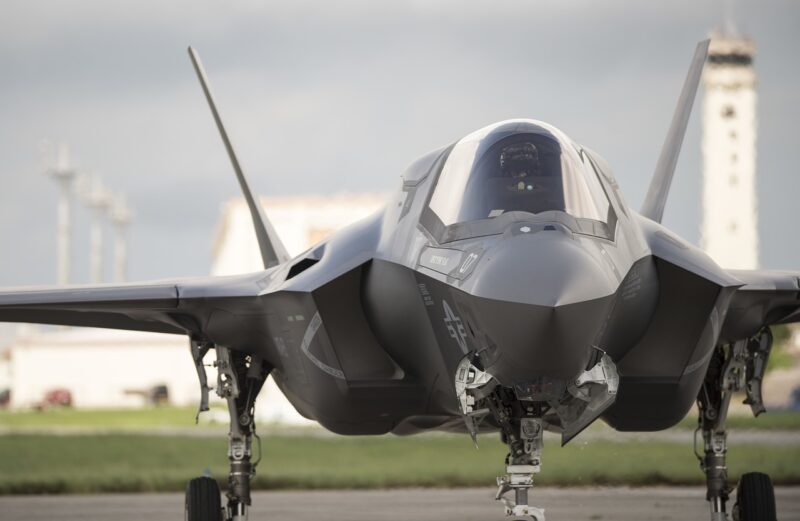How Stealth Technology Has Redefined Military Strategy and Defense
November 11, 2024

Stealth technology has revolutionized military strategy and defense operations since its inception. Initially developed to counter advanced radar systems, stealth technology allows military assets—aircraft, ships, and vehicles—to evade detection, engage precision strikes, and enhance battle survivability. In this article, we will explore the evolution of stealth technology, its underlying principles, various applications in modern warfare, and its implications on global defense strategies.
1. The Evolution of Stealth Technology
The journey of stealth technology began during the Cold War, primarily due to the technological advancements in radar. By the 1960s, the development of radar systems had reached a point where the U.S. military needed a solution to maintain air superiority. The emergence of low-observable (LO) technology became the heart of stealth design, which encompasses methods to minimize the radar cross-section (RCS) of military aircraft.
One of the earliest successes of stealth technology was the U.S. Air Force’s F-117 Nighthawk, introduced in the 1980s. Its distinct angular shape and radar-absorbent materials allowed it to evade detection by most radar systems, enabling successful missions during the Gulf War.
Since then, stealth technology has evolved, with countries investing heavily in refining their stealth capabilities. The development of advanced materials and innovative engineering solutions has propelled this technology to new heights. Additionally, countries like Russia and China have made significant strides in stealth technologies, leading to an arms race in this domain.
2. Principles of Stealth Technology
The effectiveness of stealth technology hinges on three critical principles:
1. Shape: The design of stealth vehicles is crucial in deflecting radar waves. Angular shapes help scatter radar signals away from their source, reducing the RCS.
2. Materials: Radar-absorbing materials (RAM) are employed to absorb radar signals rather than reflecting them back. These materials can be applied as coatings or integrated into the structure itself.
3. Electronic Warfare: Modern stealth technology often includes advanced electronic warfare systems that work to jam enemy radar and communication systems, further enhancing the stealth capabilities of military assets.
Understanding these principles has allowed military engineers to design robust stealth solutions that can be employed across various platforms, including aircraft, naval vessels, and ground vehicles.
3. Applications of Stealth Technology in Modern Warfare
Stealth technology has a broad range of applications in contemporary military operations. Here are several key areas where stealth capabilities have made a substantial impact:
– Air Power: Stealth aircraft like the F-22 Raptor and B-2 Spirit have been pivotal in engaging high-value targets with minimal risk of detection. These platforms allow for precision strikes and intelligence-gathering missions in heavily defended airspace.
– Naval Warfare: Stealth technology has also been integrated into naval vessels, such as the U.S. Navy’s USS Freedom. These ships utilize hull designs and radar-absorbent materials to reduce their visibility to enemy radars and improve survivability.
– Ground Forces: Emerging stealth-enabled ground vehicles are being developed to enhance the tactical capabilities of ground units, providing them with better chances to navigate complex environments undetected.
– Missile Technology: Stealth technology has crossed into missile systems, with platforms like the AGM-158 Joint Air-to-Surface Standoff Missile (JASSM) designed to evade enemy air defenses and deliver precision strikes effectively.
Incorporating stealth into diverse military operations allows armed forces to maintain a tactical advantage over adversaries and execute missions with greater efficiency.
4. Implications for Military Strategy and Global Defense
The ascent of stealth technology has necessitated a significant shift in military strategy and global defense norms. Traditional military frameworks based on detection and engagement have been challenged by the stealth capabilities of modern warfare.
– Asymmetric Warfare: Stealth technology has empowered smaller nations and non-state actors to challenge larger, more established military powers, compelling the latter to rethink their strategies.
– Defense Budget Allocations: Nations are increasingly investing in stealth programs, resulting in an arms race that influences both national security strategies and defense budgets on a global scale.
– New Countermeasures: The rise of stealth technology has also invoked countermeasures. Nations are focusing on developing advanced radar systems and electronic warfare tactics to detect and mitigate stealth assets effectively.
The complex dynamics of stealth technology lead to a shifting landscape in international relations and military operations, emphasizing the increasing importance of innovation in defense strategies.
5. The Future of Stealth Technology
As technology continues to advance, the future of stealth capabilities appears bright but also increasingly complex. The development of hypersonic vehicles and artificial intelligence is expected to further transform military operations. Additionally, research into active stealth technologies—capabilities that can dynamically adapt to enemy detection methods—may redefine how militaries perceive and implement stealth.
Furthermore, the integration of hypersonic travel with stealth technology could yield unimaginable advancements in air and space capabilities, allowing for rapid deployment and minimal risk of interception.
Conclusion
Stealth technology has fundamentally redefined military strategies and defense paradigms worldwide. With its implications echoing through tactical, strategic, and technological domains, it remains critical for nations to adapt and innovate as the global landscape continues to evolve. As advancements in stealth capabilities progress, the military industrial complex must remain vigilant and proactive in addressing emerging challenges and opportunities, ensuring that national security is preserved in an increasingly complex world.
This ongoing evolution emphasizes the unrelenting pace of innovation that stealth technology will continue to drive in military operations in the years ahead.








